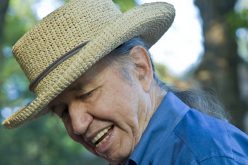Modern Meritage
Recommending “Suendero”
from Vina Robles
In answer to some recent queries, yes, I have noticed that we’ll soon reach our 400th edition of Bruce’s eWine of the Week. And yes, we’ll for sure celebrate the occasion with something special. More on that later.
This week we’ll take a new look at an old name of an ancient blend, today’s modern take on the world’s most famous red wine..
Try a new wine this week!
Bruce
 Several years ago, the word “Meritage” was invented as a new name for an old blend. A newly-popular wine magazine called Wine Spectator (that tells you how long ago it was), gave a prize of many cases of wine and other things I can’t remember for the winning entry of a contest. The challenge was to help California wineries find a way to say, in one word, “a California blend of the same grape varieties that are used in Bordeaux, France”. They really needed a shorter way to say that.
Several years ago, the word “Meritage” was invented as a new name for an old blend. A newly-popular wine magazine called Wine Spectator (that tells you how long ago it was), gave a prize of many cases of wine and other things I can’t remember for the winning entry of a contest. The challenge was to help California wineries find a way to say, in one word, “a California blend of the same grape varieties that are used in Bordeaux, France”. They really needed a shorter way to say that.
And they were saying it a lot. Until the late 1970s and early 1980s, a typical California cabernet sauvignon was 100 percent cabernet sauvignon. But, in that grape’s native home of Bordeaux, in southwestern France, it was (and still is) blended with merlot, and oftentimes with cabernet franc, malbec and petite verdot. (There is also a less-popular white grape version.)
California wineries were beginning to see merit in softening their cab’s with a little merlot, and using cabernet sauvignon to give merlot a little more backbone. All they needed was a simple name, especially for blends that didn’t contain at least 75 percent of one grape variety (the minimum in California to label a wine with a single grape name).
The winner was Meritage, rhyming with “heritage” (which was immediately and nationally pronounced “mair ih TAGE”). But, it accomplished the goal. A blend of any or all of those five “Bordeaux varietals” is, even today, called either “MER i tage” or “mer i TAGE.” You won’t always see the word on the label because the name was trademarked.
Today’s “Bordeaux blends” are sometimes very unlike their French cousins. One example is from Vina Robles, near the California Central Coast wine town of Paso Robles. It’s named “Suendero” (“Dream Path”), for the rugged terrain of Adelaida Springs Ranch, a small vineyard in the coastal mountains west of Paso Robles. Its elevation of 1,500 feet and proximity to the Pacific Ocean (12 miles), give it an intensity of flavor and elegance of style not often found in more conveniently-situated vineyards. Its blend of cabernet sauvignon and petite verdot (52 percent/48 percent in the 2006) is also uncommon. Suendero retails for around $50 per bottle.
“Suendero” from Vina Robles is aged for 18 months in French oak barrels, most of which are new.
Bruce Cochran has traveled to every major wine region on four continents. A 30-year veteran of the wine trade, he taught continuing education wine classes for 26 years at colleges throughout Arkansas. www.brucecochran.com









